Amazing Drone Technologies

Drones have infiltrated battle skies, with the latest innovation an experimental drone, the X-45B (seen here), that can take off from an aircraft carrier.
Now the business of building them for other purposes is set to take off, too. Meteorologists, police and fire departments, underwater oil and gas drillers, moviemakers, farmers, hobbyists and a long list of companies have an interest in drone use. The industry predicts there could be 70,000 new jobs and $13.6 billion of increased economic impact if regulations are eased to allow drones to fill U.S. skies. The Federal Aviation Administration will start rolling out new regs in 2015.
Don't be surprised if drones designed for the military find more widespread uses in the coming years, for everything from scientific research to just playing around. Here's a look:
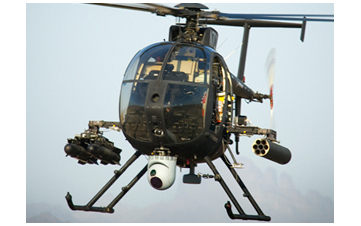
For Military Use
- The prototypical military drone has wings and a bulbous nose on the front to house the radar. But helicopter-based drones are under development as well.
- Boeing's Unmanned Little Bird, pictured here, is an evolution of its AH-6 helicopter, versions of which have long been in military use. It's autonomous, but can carry pilots if the mission warrants. A variety of weapons can be loaded onto the drone, including rockets, a 30 mm chain gun and Hellfire missiles.
- There's also Lockheed Martin and Kaman Aerospace Corp.'s K-MAX unmanned aircraft system. This helicopter drone is designed to bring cargo to the battlefield without putting pilots at risk. It can lug 6,000 pounds of cargo with its 1,800-horsepower engine. It has a 250-mile range while carrying cargo with its hook-and-trolley system. Developed in partnership with Kaman Aerospace Corp., it's been tested in Afghanistan by the Marine Corps.
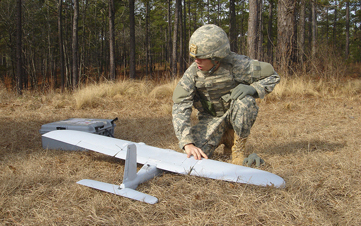
Surveillance
Even as drones are adapted to new uses, surveillance continues to dominate.
- The six-pound Desert Hawk III from Lockheed Martin, shown here, takes 10 minutes to unpack and deploy. It has infrared night vision technology to scour the ground after dark in a 360-degree radius. A four-and-a-half-foot wingspan provides enough stability to navigate through gusts of wind at elevations up to 17,000 feet, withstanding temperatures of 140 degrees Fahrenheit. The company is developing gesture technology so that a wave of the hand will help land future versions.
Looking for fuel efficiency? Think big. Boeing's 9,800-pound Phantom Eye is powered by liquid hydrogen, which leaves only water vapor in its wake. The behemoth can soar to 65,000 feet and stay there for four days. It has a wingspan the length of half a football field, yet it is virtually invisible to the naked eye from the ground. The drone is equipped with sensors and can monitor vast areas.
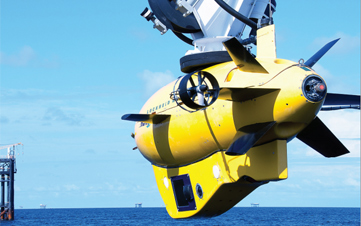
In the Water
- Using unmanned vehicles to explore the deep is not new — robotic units tethered to ships above are in widespread use in the military and commercially (think exploring the Titanic). But now the cord is being cut, letting drones of the deep roam without direct support.
- Pictured here is Lockheed Martin's Marlin. Named after a fish that spears through the water at up to 70 miles per hour, this Marlin putters along at no more than four knots. But the 10-foot-long submarine has high-tech sensors that can create 3-D images of what's below, including acoustics. The 2,000-pound drone is well suited for the oil and gas industry, especially for emergency surveillance. It can stay in use for 16 hours at a time.
- The Wave Glider from Liquid Robotics, based in Sunnyvale, Calif., is a floating drone powered by both solar panels and ocean waves. It's equipped with GPS and satellite technology that can be used for national security, extreme weather warnings and offshore energy. It can stay afloat gathering intelligence for a year. And scientists at the Defense Advanced Research Projects Agency are working on underwater drones that could wait in storage on the ocean floor for years at a time. The drones will be woken up remotely and “fall upward” to begin surveillance when needed.
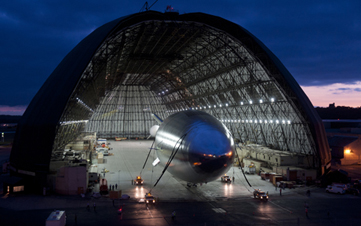
Weather Watching
- We tend to think of drones as flying machines that keep track of what's on the ground, but they can also serve as sentinels of the atmosphere above.In the works at Lockheed Martin are helium-filled blimps, like the one pictured here, that will soar to 60,000 feet or more above the earth. Soaring over clouds, wind and weather means more-reliable sunlight to the solar cells that will provide the drone's power. These blimps will also be able to scan the horizon for missile launches and watch the ground below, staying on duty for up to a month at a time.
- Also flying high is Northrop Grumman's Global Hawk. This jet-powered conventional drone can reach the stratosphere and stay aloft more than 30 hours at a time. NASA has used the Global Hawk to study extreme weather conditions.
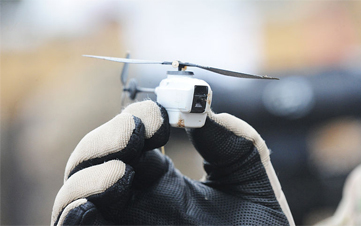
Foreign-Made
- The U.S. may have more drones than any other country, but dozens of other countries field drone technology, some of their own design.
- Israel has had drones for decades. In fact, it was Israel's success with drones way back in the 1982 Lebanon war that prodded the U.S. to advance its drone development. Israel Aerospace Industries builds the Heron line of drones, which have been exported to countries including Brazil, Australia, Ecuador and India.
Prox Dynamics, based in Norway, builds the diminutive Black Hornet Nano. This tiny helicopter is just four inches by one inch in size and weighs less than an ounce. In use by the British military, it can be stashed in a soldier's combat vest, then quickly launched to send back video and still images. The Black Hornet can stay aloft for about 30 minutes and has a range of 1,000 feet.
Still early in its drone development, China is boosting its drone capabilities. Enter the Wing Loong, or Pterodactyl, which was shown off at a Chinese air show in 2012. China is also believed to have a drone that can deliver laser-guided bombs.
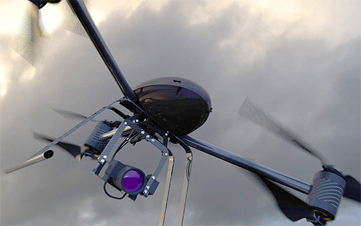
For Commercial Use
- Unmanned flying vehicles have huge potential in the commercial market as well.
Dramatic aerial footage is a staple of Hollywood movie production. But getting the shots that thrill audiences can be expensive. That's why movie moguls are eager to harness the money-saving power of drones. The Draganflyer X6-ES is already in use on location. This helicopter drone has a gyroscope and 11 sensors for extra stability during live shots, while vibration control adds protection for its onboard still camera or HD video camera. It weighs less than five pounds and is made from durable carbon fiber. The base device starts at around $15,000 — double with all the extras.
Poised to benefit the most from drones is the agriculture industry. Drones such as the SA-400 Jackal, built by Colorado-based Scion UAS, could swiftly be adopted by agribusinesses to monitor crops and dust fields. At just under seven feet tall and 19 feet long, the Jackal resembles a small helicopter. It can carry 200 pounds and stay aloft for four hours.
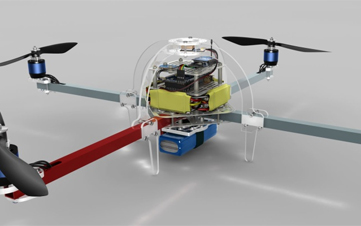
For Hobbyists
- Drones for hobbyists are akin to souped-up remote-controlled aircraft with the ability to do some autonomous flying.The model aircraft industry is still guided by a 1981 Federal Aviation Administration advisory that tells hobbyists to keep their aircraft below 400 feet and notify airports if flown within three miles. California-based 3D Robotics has a number of personal drone kits. The ArduCopter 3DR Hexa C, shown here, costs just $765 and can be retrofitted to a variety of personal specifications. The hexacopter has six blades and a gyroscope that lets it do loops and barrel rolls. Add a sonar sensor for automated takeoff and landing. The ArduPlane costs $550 and has autopilot and airspeed sensors. The drone has a fixed wing along with built-in camera controls and a program that automatically flies the plane to safety if radio connection is lost.

More from Kiplinger
9 Amazing Military Technologies of the Future
6 Fields Where Robots Are Taking Charge
14 Tech Products Taking a Bite out of Apple
The Nation's Crumbling Infrastructure: 6 Examples in Need of Upgrades Right Away
8 Ways Cyberterrorism Threatens You
Profit and prosper with the best of Kiplinger's advice on investing, taxes, retirement, personal finance and much more. Delivered daily. Enter your email in the box and click Sign Me Up.

John Miley is a Senior Associate Editor at The Kiplinger Letter. He mainly covers AI, technology, telecom and education, but will jump on other business topics as needed. In his role, he provides timely forecasts about emerging technologies, business trends and government regulations. He also edits stories for the weekly publication and has written and edited email newsletters.
He holds a BA from Bates College and a master’s degree in magazine journalism from Northwestern University, where he specialized in business reporting. An avid runner and a former decathlete, he has written about fitness and competed in triathlons.
-
 AI Appliances Aren’t Exciting Buyers…Yet
AI Appliances Aren’t Exciting Buyers…YetThe Kiplinger Letter Artificial intelligence is being embedded into all sorts of appliances. Now sellers need to get customers to care about AI-powered laundry.
-
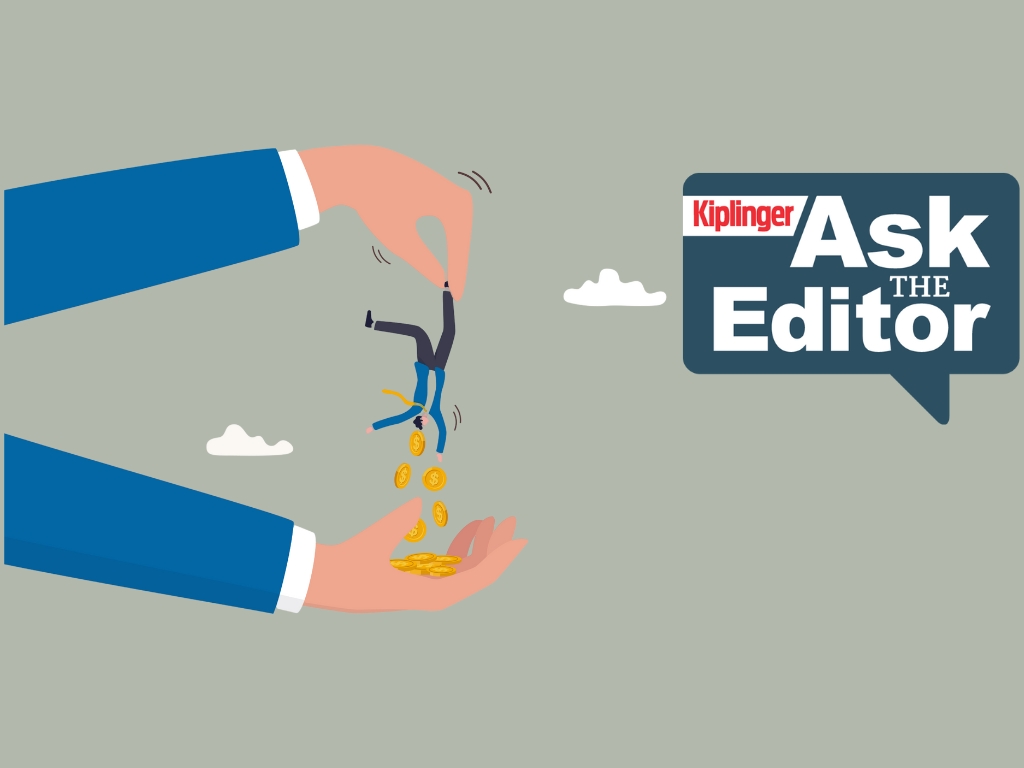 Ask the Editor: IRAs, 401(k)s and RMDs
Ask the Editor: IRAs, 401(k)s and RMDsAsk the Editor In this week's Ask the Editor Q&A, Joy Taylor answers questions on IRAs, 401(k)s and required minimum distributions
-
 Got $100 to Gamble? These Penny Stocks Could Be Worth the Ride
Got $100 to Gamble? These Penny Stocks Could Be Worth the RideVolatile penny stocks are high-risk plays with potentially high rewards. If you have $100 you can afford to lose, these three names are worth a look.
-
 What Is AI? Artificial Intelligence 101
What Is AI? Artificial Intelligence 101Artificial intelligence has sparked huge excitement among investors and businesses, but what exactly does the term mean?
-
 Text-Generating AI Faces Major Legal Risks: Kiplinger Economic Forecasts
Text-Generating AI Faces Major Legal Risks: Kiplinger Economic ForecastsEconomic Forecasts Major legal risks to text-generating artificial intelligence: Kiplinger Economic Forecasts
-
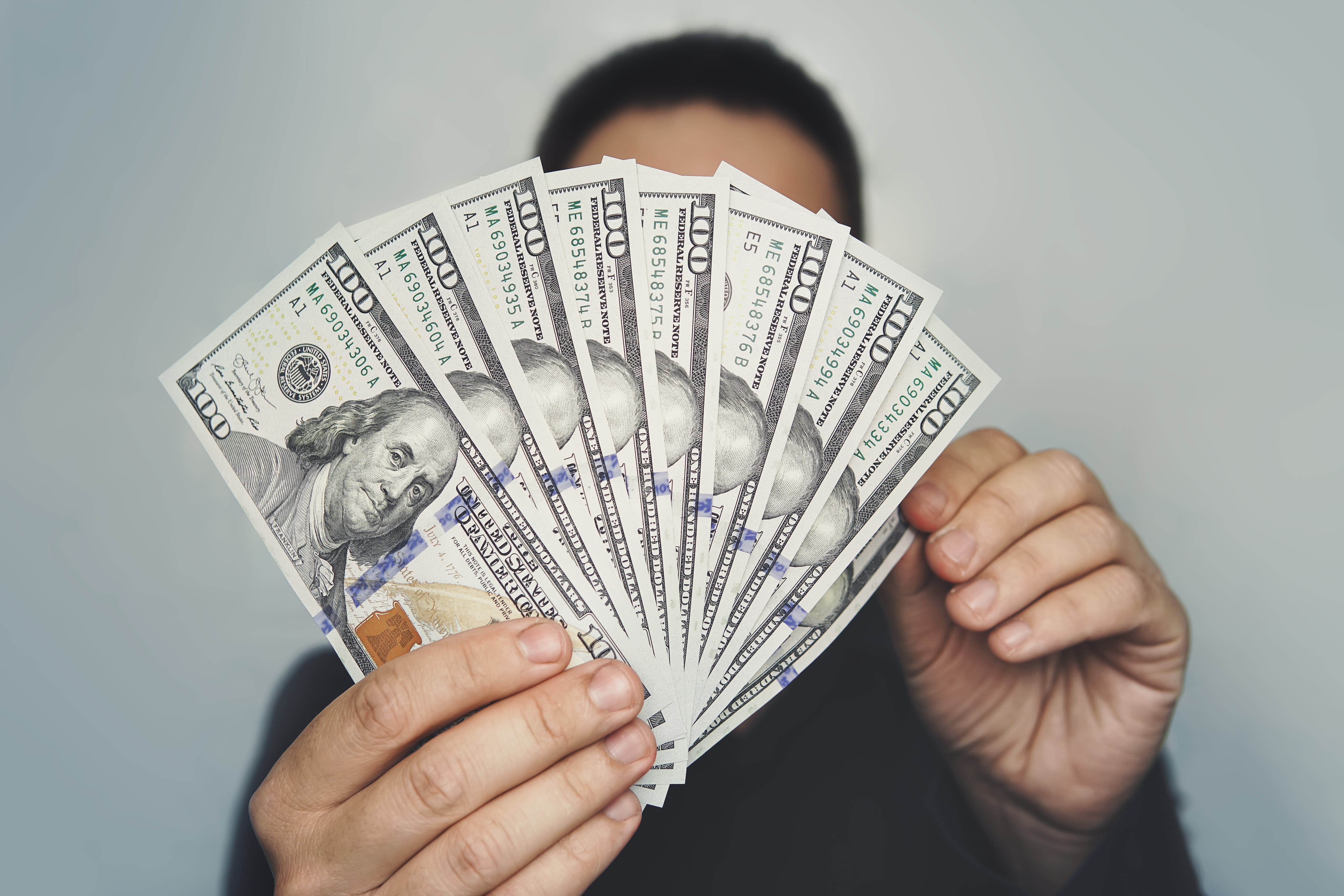 32 Ways to Make Money in 2025
32 Ways to Make Money in 2025business Check out these cool side hustles to earn bonus bucks this year.
-
 12 IRS Audit Red Flags for the Self-Employed
12 IRS Audit Red Flags for the Self-Employedtaxes If you are self-employed, minimize the odds of an IRS audit by avoiding these audit triggers.
-
 Business Cost Outlooks for 2022: Eight Key Sectors
Business Cost Outlooks for 2022: Eight Key SectorsEconomic Forecasts What’s in store for all sorts of business costs in 2022?
-
 PPP Loan Basics for Small Business Owners
PPP Loan Basics for Small Business OwnersCoronavirus and Your Money Although uncertainty and confusion have surrounded the Paycheck Protection Program since its launch, that shouldn't stop small business owners from participating in the loan program, which was just extended to May 31.
-
 Add a VPN to Surf the Internet Safely
Add a VPN to Surf the Internet SafelyTechnology To help you fight identity theft, consider adding a VPN.
-
 "Above-the-Line" Deductions for Your 2021 Tax Return
"Above-the-Line" Deductions for Your 2021 Tax ReturnTax Breaks If, like most people, you claim the standard deduction instead of itemized deductions on your return, there are still many other tax deductions available that could save you a lot of money.
